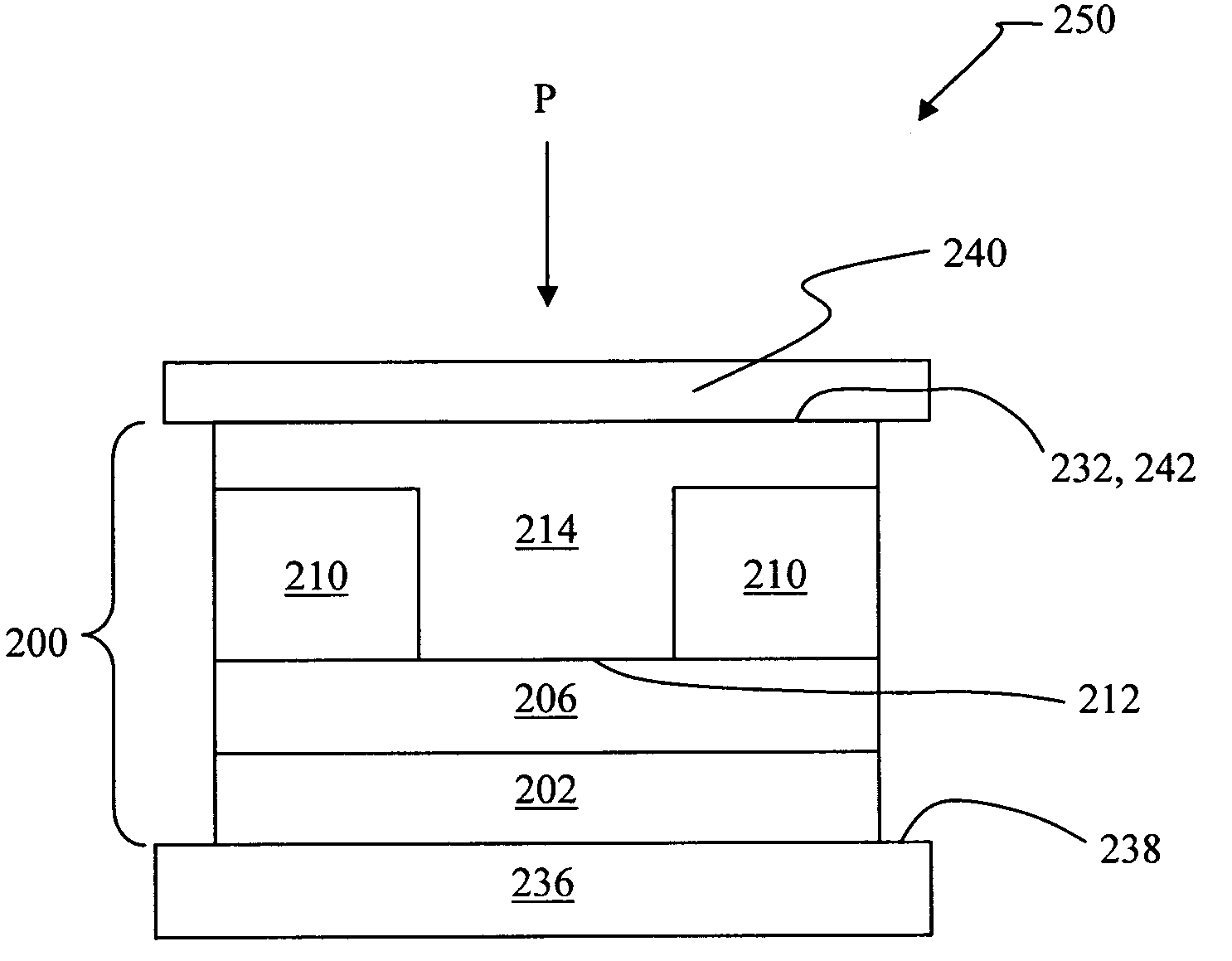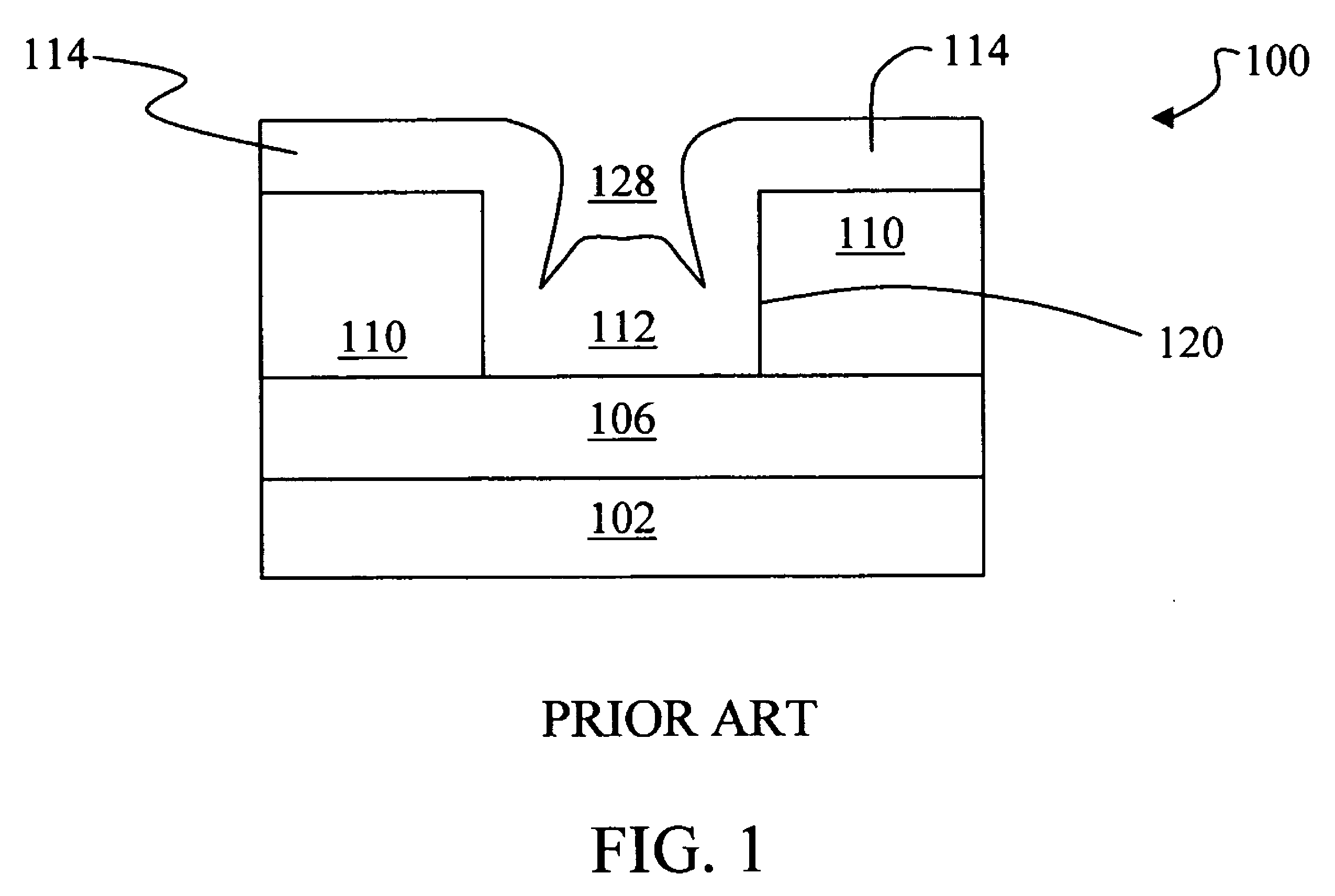Temperature and pressure control methods to fill features with programmable resistance and switching devices
a technology of programmable resistance and switching device, which is applied in the direction of semiconductor/solid-state device manufacturing, basic electric elements, electric apparatus, etc., can solve the problems of limiting the goal of device miniaturization, difficult processing of devices, and difficulty in defining small-scale features, so as to reduce structural irregularities within the opening, increase the surface mobility, and reduce the effect of structural irregularities
- Summary
- Abstract
- Description
- Claims
- Application Information
AI Technical Summary
Benefits of technology
Problems solved by technology
Method used
Image
Examples
Embodiment Construction
[0041]The making and using of the presently preferred embodiments are discussed in detail below. It should be appreciated, however, that the present invention provides many applicable inventive concepts that can be embodied in a wide variety of specific contexts. The specific embodiments discussed are merely illustrative of specific ways to make and use the invention, and do not limit the scope of the invention.
[0042]The intermediate stages of manufacturing a novel electronic device including conformally filling openings within an insulating material in accordance with the instant invention are illustrated in FIGS. 1 through 9. Throughout the various views and illustrative embodiments of the instant invention, like reference numbers are used to designate like elements.
[0043]The instant invention improves uniformity and conformal coverage of a conventional deposition process and helps prevent the problem of structural irregularities occurring during deposition processes including phy...
PUM
 Login to View More
Login to View More Abstract
Description
Claims
Application Information
 Login to View More
Login to View More - R&D
- Intellectual Property
- Life Sciences
- Materials
- Tech Scout
- Unparalleled Data Quality
- Higher Quality Content
- 60% Fewer Hallucinations
Browse by: Latest US Patents, China's latest patents, Technical Efficacy Thesaurus, Application Domain, Technology Topic, Popular Technical Reports.
© 2025 PatSnap. All rights reserved.Legal|Privacy policy|Modern Slavery Act Transparency Statement|Sitemap|About US| Contact US: help@patsnap.com



